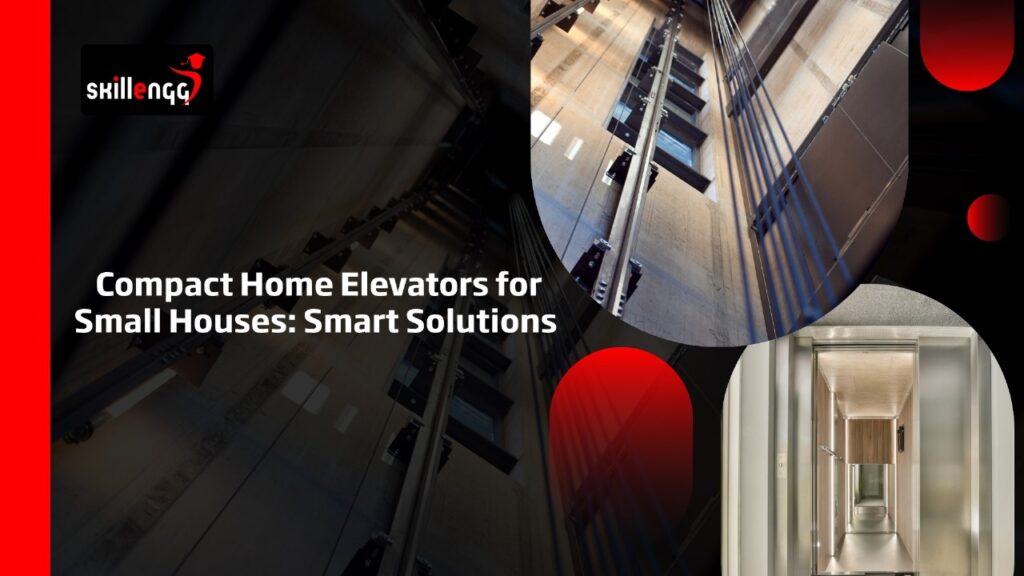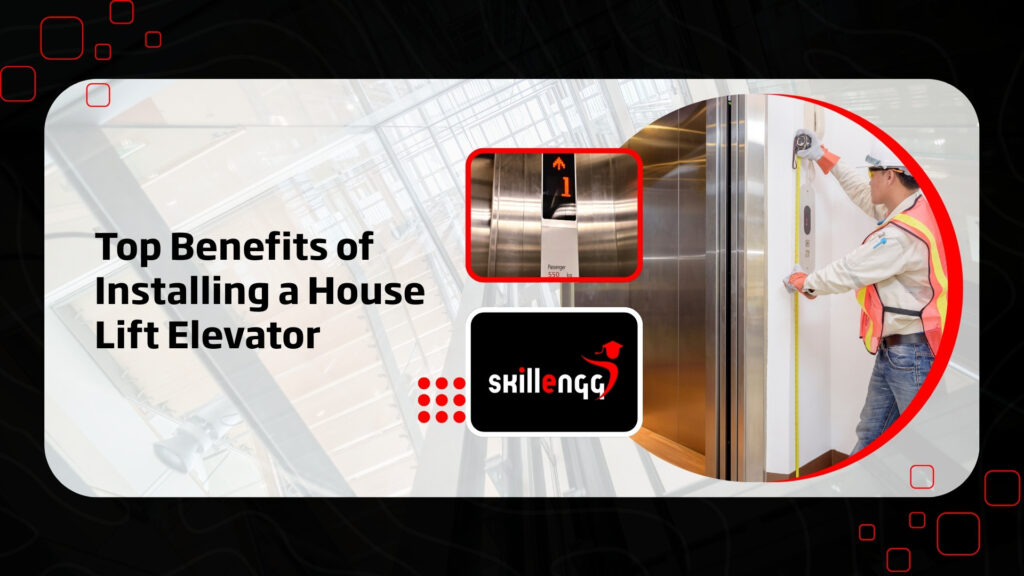Small Indian homes are going vertical. Whether it’s a duplex on a tight urban lane or a compact villa on a 30×40 plot, modern families want safer access, future-proof design, and everyday comfort. That’s exactly where home elevators make a difference—not as a luxury, but as a practical upgrade that serves every generation.
Why a Small Lift Fits Small Homes
Space is precious, but a lift doesn’t have to steal it. Today’s compact systems can work with a ~3’×3’ (≈900×900 mm) footprint, avoid deep pits, and tuck neatly against a wall, inside a stair core, or in a slim glass shaft. Plan the shaft early with your architect, align door swings with furniture layouts, and you’ll be surprised how naturally the lift “disappears” into the home.
Quick wins that matter in small footprints:
- No machine-room options to free up floor area
- Shallow or no-pit designs to simplify civil work
- Clean, quiet drives that keep bedrooms peaceful
For buyers comparing small home lifts, we often recommend mapping two placements: beside the stair for straight-through traffic, and in a corner for minimal visual impact. That approach also suits compact elevators for houses, where every millimetre counts. From a regulatory standpoint, residential elevators benefit when GA drawings, loads, and tolerances are frozen early—keeping coordination crisp and costs predictable.
Real-World Costs (Indian Context)
Think of the spend like a modular kitchen or premium AC setup. Installation varies with travel height, number of stops, finishes, and shaft type; add a sensible AMC (annual maintenance contract) so the system stays smooth, safe, and efficient. Electricity usage is similar to a mid-range appliance when running, and sleep modes cut idle consumption further. With home elevators, separating the lift contract from civil works for the shaft and electrical keeps scope clear and bids comparable.
Budgeting tip: Where walls are tight, specify sliding or telescopic doors at landings. This preserves corridor widths and reduces rework later.
Safety That’s Standard, Not Extra
At Skillengg, safety sits at the top of the spec sheet:
- Automatic Rescue Device (ARD) to land at the nearest floor during power cuts
- Door interlocks and obstruction sensors to prevent unsafe movement
- Overload protection to safeguard both the drive and users
- In-car emergency call via phone/intercom or app
We hand over a commissioning checklist and run live demos of rescue and alarm features so your family knows exactly what to expect. This is table stakes for residential elevators, but careful witnessing makes the difference between “installed” and “trusted.”
Which Mechanism Is Right for You?
Choosing the drive is like choosing the engine for your car—it shapes comfort, upkeep, and space.
- Hydraulic: Great with limited headroom; wonderfully smooth starts/stops. Keep a small cabinet for the power unit and schedule oil checks.
- Gearless traction: Whisper-quiet, energy-efficient, and perfect for glass shafts or design-led interiors—often the go-to for luxury home elevators, where ride quality and aesthetics are top priorities.
- MRL (Machine-Room-Less): Packs equipment inside the shaft for a clean architectural look and simpler planning.
Rule of thumb:
- Tiny footprint + short travel → Hydraulic or compact MRL
- Design-led glass aesthetic + ultra-quiet ride → Gearless traction
Accessibility That Gives Independence
A compact lift isn’t just convenience; it’s confidence. Parents carrying babies, seniors avoiding stairs, and visiting relatives using a wheelchair all move freely, safely, and without stress. Home elevators shine when paired with practical details: a fold-down seat, a low-height control panel with clear labelling, non-slip flooring, a sturdy handrail, and voice prompts/tactile buttons.
Quiet, Efficient, and Neighbour-Friendly
Well-installed systems keep noise below typical appliance levels, so placing the shaft near bedrooms is manageable. We detail the shaft like a quiet zone—seal gaps, specify denser boards where needed, and add vibration isolation at anchor points for a calmer home. Energy-wise, modern drives are frugal, and idle sleep modes make daily ownership painless.
Looks Matter—Make It Yours
Function is non-negotiable; form is fun. Choose glass and matte-black trims for a modern look, warm laminates for a classic vibe, or stainless textures for a clean, minimalist palette. Align architraves and skirting for a built-in feel, and match cabin flooring to living areas so the lift reads as part of the architecture. These choices echo the design sensibilities typically associated with luxury home elevators, even in modest footprints.
For truly tight plans, compact elevators for houses gain a lot from a glazed shaft in the stair void—borrowing natural light while keeping the visual field open.
Smart Home, Smart Lift
From app-based calls and floor selection to remote diagnostics, today’s systems slot straight into your connected home. Voice triggers are possible too—kept behind sensible safety interlocks. We configure alerts, preventive health checks, and service reminders so issues are caught early and downtime stays low. When clients compare small home lifts, this always-on visibility often becomes the deciding factor.
Approvals and Practicalities
Before construction sprints ahead, freeze:
- GA drawings with clearances and loads
- Power and earthing plans
- Shaft tolerances and sill supports
- Rescue access and signage
Your installer should coordinate state inspections and licensing post-installation. Keeping the documentation tidy smooths renovations and helps at resale—a benefit many buyers now associate with home elevators in well-planned builds.
Skills, Service & Careers
Great installations stay great with great maintenance. Skillengg trains field teams continuously, from safety drills to diagnostics. If you’re curious about technical careers—or want your facility staff upskilled—ask about our lift technician course covering commissioning, fault-finding, and preventive care. We also help housing associations and RWAs standardise SOPs so residential elevators keep running smoothly year-round.
Conclusion
In a compact Indian home, a small lift is a rare upgrade that blends safety, comfort, and design day after day. With the right mechanism, smart integration, and a clean install, home elevators feel effortless, protect your family’s mobility, and add quiet value to your property. If you’re planning, let’s lock the shaft early, align the doors and finishes, and build a system that simply works. With SkillEngg on the drawings and on the tools, home elevators stop being a dream and start being a daily habit. And if you’re keen to grow on the service side, our lift technician course is a practical pathway into a high-impact, future-proof trade.
At Skillengg, we don’t just build smarter mobility solutions—we build skilled professionals to maintain them. Our Lift Technician Course empowers learners with real-world installation, maintenance, and safety expertise to keep every home elevator running at its best




